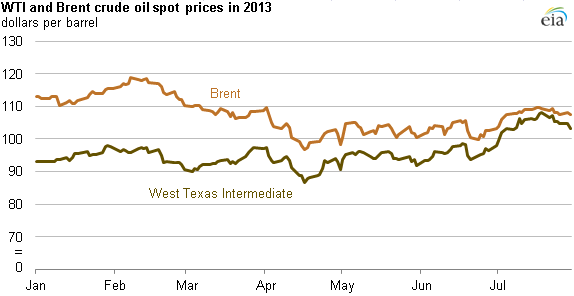
Historically, Brent crude, which serves as a benchmark for oil prices globally, has traded at a premium over WTI, which is more closely tied to the US oil market. This premium has been attributed to various factors including regional supply constraints, transportation costs, and differing quality of crude oils. However, recent trends indicate a narrowing gap, signaling notable changes in both domestic and international oil markets.
The reduction in the Brent-WTI price differential is largely driven by an increase in US crude oil production and a rise in exports. According to the latest data, the US has reached record levels of oil production, largely due to advancements in hydraulic fracturing and horizontal drilling technologies. This surge in output has not only bolstered domestic supply but also positioned the US as a more significant player in global oil markets.
Another critical factor contributing to the narrowing price gap is the improvement in US infrastructure, particularly the expansion of pipelines and export terminals. Enhanced infrastructure has facilitated a smoother flow of crude oil from production sites to export markets, reducing transportation costs and making US oil more competitive internationally. This development has allowed US crude to reach more global markets, exerting downward pressure on the Brent-WTI spread.
Moreover, geopolitical factors and global economic conditions are also influencing the price dynamics. For instance, recent geopolitical tensions in key oil-producing regions have impacted global oil supply, contributing to fluctuations in the Brent benchmark. In contrast, the relative stability in US oil production and the country's growing energy independence have provided a counterbalance, influencing the narrowing of the price gap.
Market analysts suggest that the changing dynamics reflect a broader trend of increased integration of US oil into global markets. The United States' role as a leading oil producer and exporter is becoming more pronounced, potentially altering the traditional price benchmarks and increasing its leverage in global oil negotiations.
The impact of this shift extends beyond mere pricing. As the price differential narrows, it may influence global oil trading patterns and investment decisions. Companies and countries that rely on Brent as a pricing benchmark might need to reassess their strategies in light of the changing dynamics. Additionally, the reduction in the Brent-WTI gap could lead to more balanced market conditions, potentially affecting the pricing strategies of major oil companies and influencing global energy policies.
The recent contraction in the Brent-WTI price gap underscores a significant evolution in the global oil market. The increased production and export capacity of US crude, coupled with improved infrastructure and shifting geopolitical factors, are key drivers behind this trend. As the US continues to assert its influence on global oil markets, the traditional benchmarks and price differentials may undergo further adjustments, reshaping the landscape of the energy sector.
Topics
Spotlight
